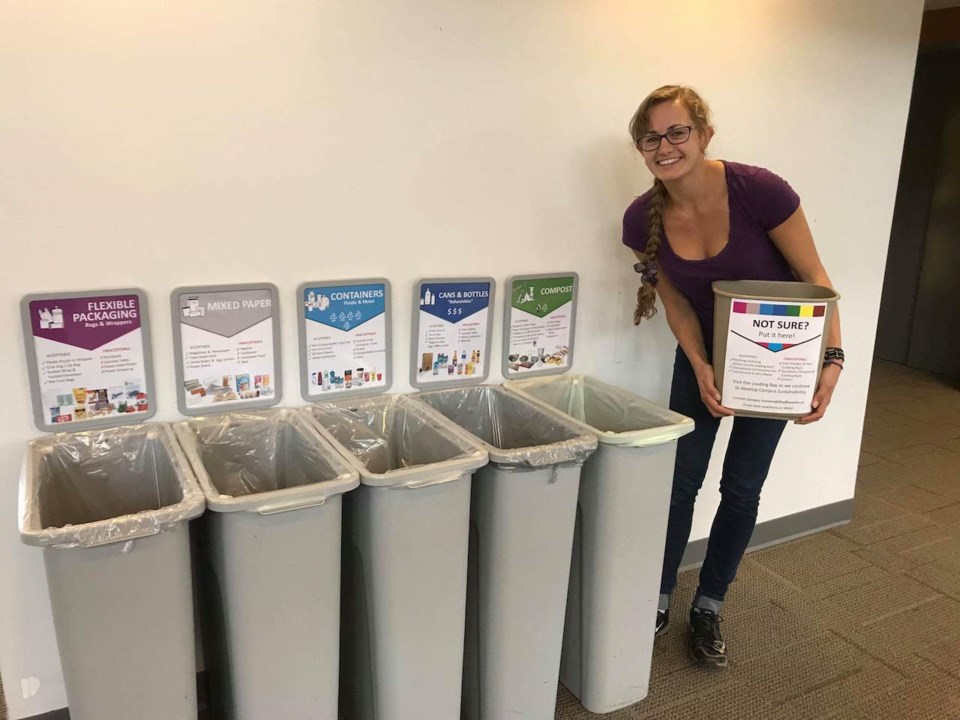By a staggering number, Quest University has managed to cut down the recyclables and compostables being incorrectly thrown into the garbage.
Before September 2017, contamination rates were something to the tune of 60 to 80 percent at the school.
Meaning that is how much of the wrong waste was ending up in the trash.
Currently, contamination rates at the student residences are at 21 per cent.
The success is even greater in the main campus buildings, where that number has dropped to 10 per cent. This includes the Library, Academic, and Services buildings.
Samantha Leigh, student sustainability researcher at the school, said that a great deal of the contamination was cut down after she decided that better labels for bins were necessary.
"The most successful decontaminated waste streams were when the signs were really good at describing what items went there," said Leigh.
"The garbage bins everyone thinks that garbage is everything that they throw out. What should we actually be sending to landfill?"
It turned out the answer to that question was soft, flexible packaging that couldn't be recycled in any other bin.
"Instead of calling it garbage, we made a whole new suite of signs and we called our garbage stream — the stream that went to landfill — we called it soft plastics instead," Leigh said.
It's a recyclable material, but the school didn't have pickup for that, she said.
As a result, students then had the option of throwing their waste into bins labelled soft plastics, containers, compost, paper and refundable beverage containers
"It was amazing," said Leigh.
The change happened swiftly.
Comparing the results at the initiative's start in September 2017 and then in December, contamination had already dropped to about 29 per cent.
"Classifying and understanding the types of waste that we produce is the first most important thing," she said.
"Understanding the types of waste that are produced means you can have very descriptive signage."



